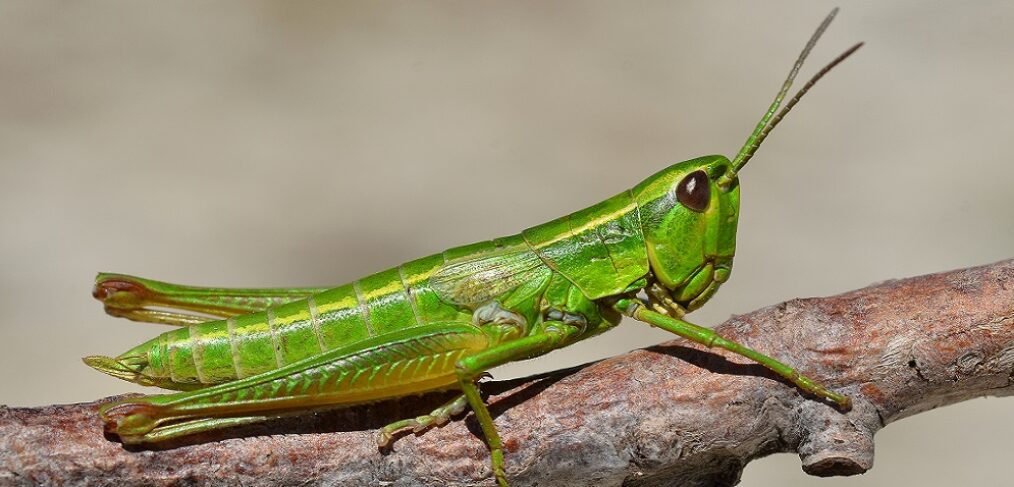
species of the week #30 – small gold grashopper
The small gold grashopper reaches a body length of 13 to 26 millimeters, whereby the females are larger than the males. Both sexes are light green with golden shimmer. In Southern Germany, the little gold-tailed insect belongs to the most frequent locusts at all in many places. However, the type is regarded as lost in Rhineland-Palatinate. In immediate neighborhood in Alsace and in South-Hesse, occurrences are known.
| Distribution status | Extinct in Rhineland-Palatinate |
| Remaining deposits | Alsace, South Hesse, Bavaria, Baden-Wuerttemberg, Thuringia, Saxony |
| Last sighting in Rhineland-Palatinate | 1958 |
| Habitat | Highly overgrown meadows, fallow |
| Threat | Early complete mowing |
The small gold grashopper is one of the first short-feathered crickets that can be observed in spring. One finds first larvae already from end of March. The animals feed mainly on various grasses, such as woolly riding grass. The females lay their eggs in egg packages of five to six pieces in about 20 to 50 centimeters height between folded leaves, mostly of grasses, in a hardening, foamy liquid. Preferably, this happens in stands of the Fieder-Zwenke or the blue moor grass instead. The leaves are usually folded together with the hind legs, occasionally two leaves are used. After about 30 minutes the cocoons are already hardened and turn brown. In them the eggs are protected from moisture or dehydration. The larvae hatch between end of March and beginning of May.
The small gold grashopper lives in both wet and dry meadows. In dry habitats, the species depends on dense and high-growing vegetation, which provides a more humid microclimate in deeper layers. It colonizes wet meadows, moor grass meadows, semi-arid and dry grasslands as well as seams and perennial meadows.
The small gold grashopper reacts sensitively to mowing, and if the stalks are too short, no eggs are laid. Interventions should be staggered in space and time. Old grass islands, which remain standing over the winter, are enormously important for reproduction. The mowing with a beam mower is the most accepted of the population.
Politically necessary:
– Organization of relay mowing with unmown areas
– Extended promotion of species-rich grassland
– Support of biotope research
Picture: By Gilles San Martin from Namur, Belgium – Euthystira brachyptera femaleUploaded by Jacopo Werther, CC BY-SA 2.0, https://commons.wikimedia.org/w/index.php?curid=24610552
